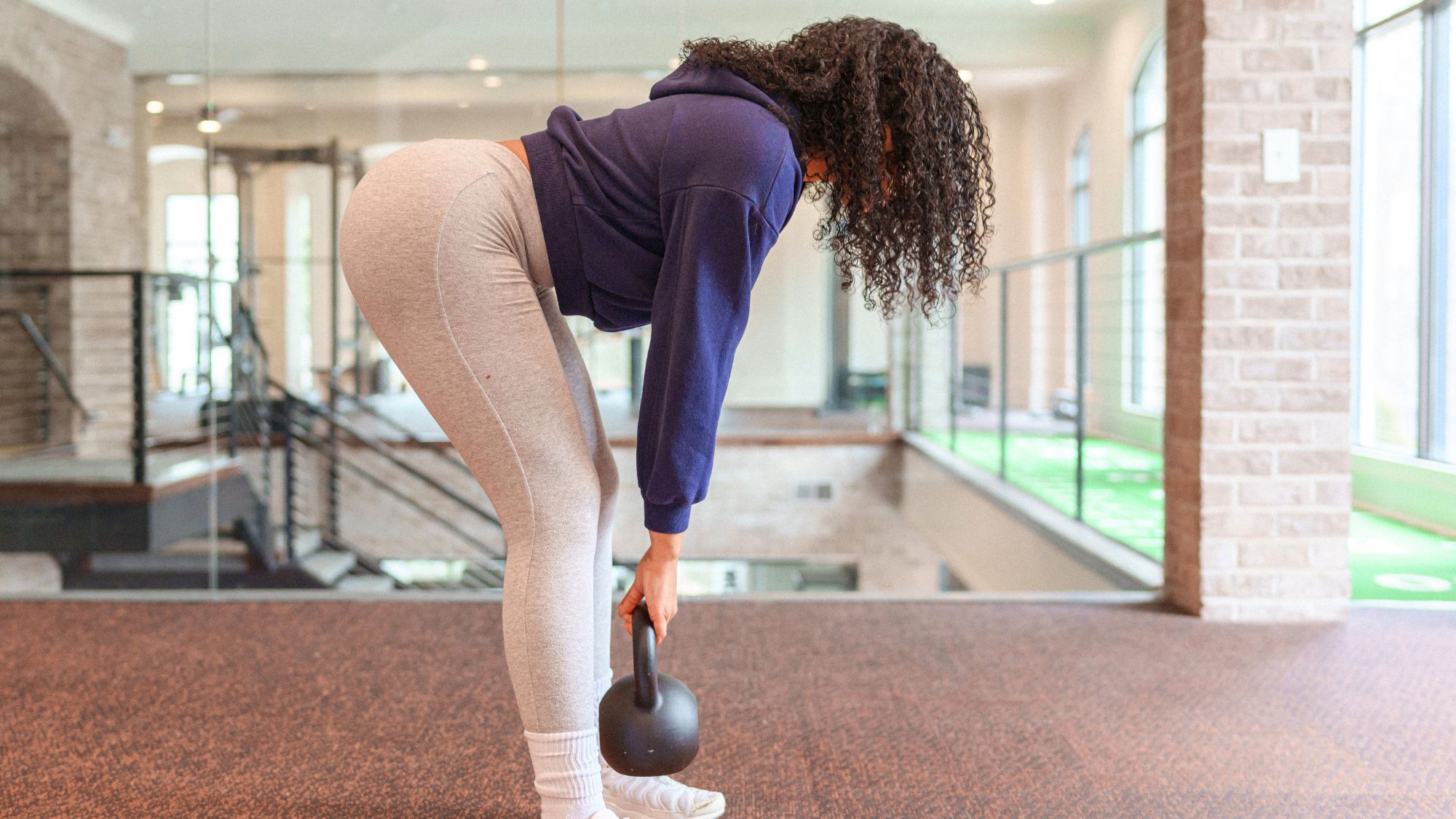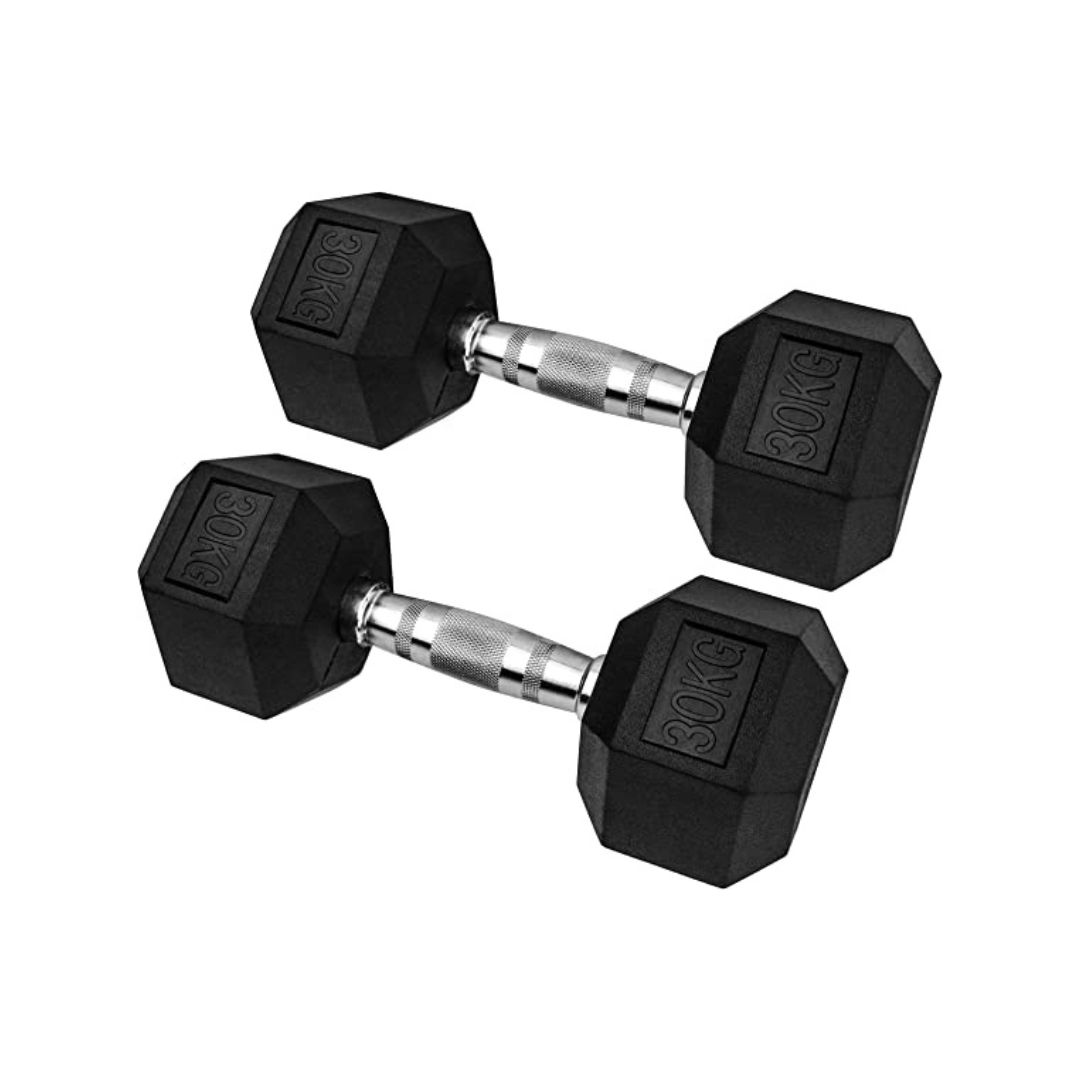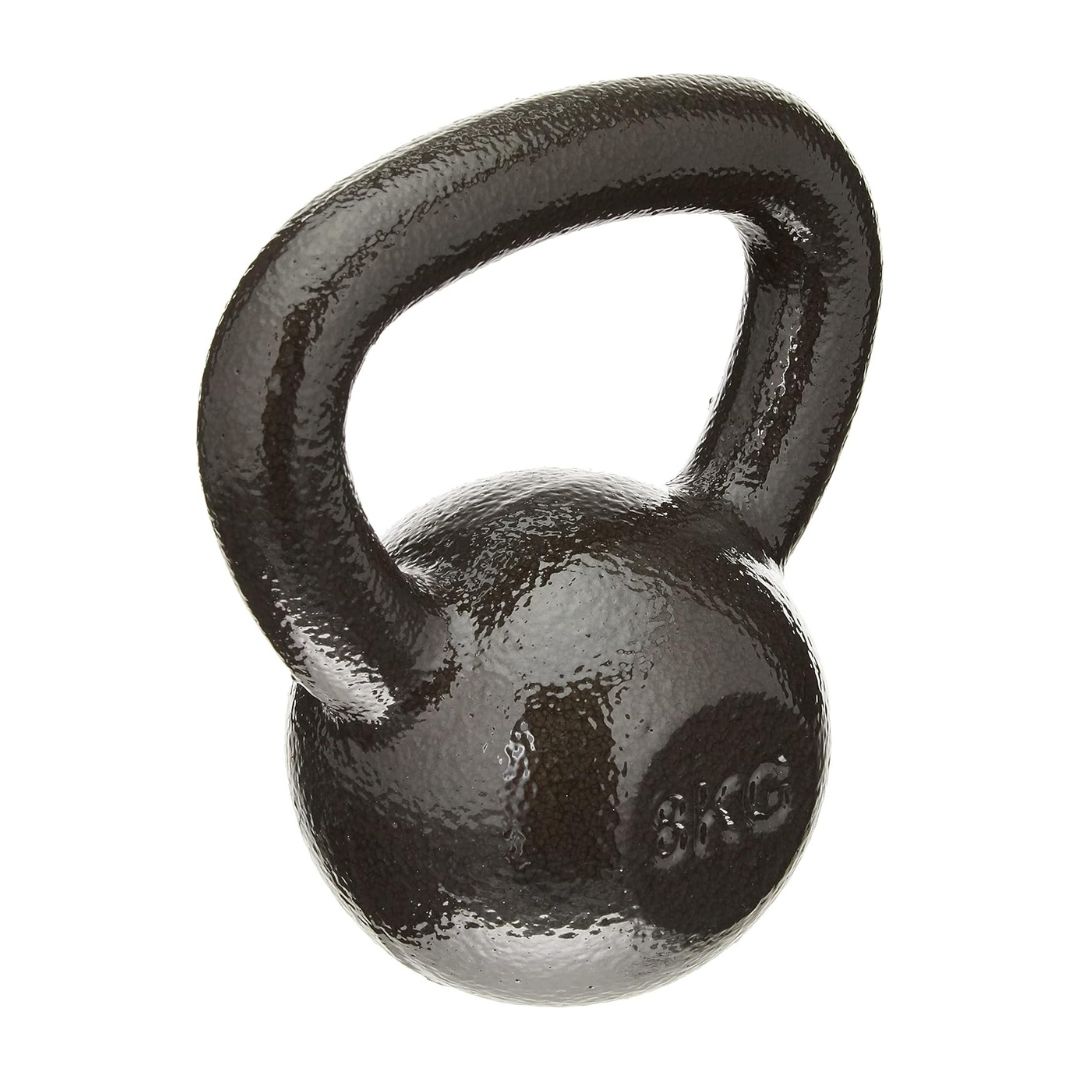I'm a qualified trainer who's been strength training for 10 years – why deadlifts are my favourite full-body exercise
They're *seriously* effective.


Something I deeply dislike, as a Health Editor and qualified personal trainer, is when fitness influencers share bold and often baseless claims about the capabilities of a single exercise to spot-reduce fat, balance hormones, and overhaul your health (and then some). You see, research there’s no such "perfect" exercise that ticks all the boxes. That said, I do have favourites. Don’t tell the others, but the deadlift is my all-time number one. I love that they’re time-efficient and easy to modify for your current circumstances. Still wondering, how effective are deadlifts for building strength and improving your fitness? Allow me to explain.
The deadlift is a compound exercise, meaning it recruits multiple joints and muscles, at once. “It’s a lower body hip hinge bias variation,” says personal trainer Andy Vincent. “By that, I mean that as much as the knee bends, the hip is the main joint that has to flex during the movement, so therefore muscles around the hip are most likely to be engaged.” Glutes and hamstrings are the main movers in the exercise, he explains, but because the weight is held in the hands, the upper body – specifically, the core and the back – is also targeted.
Research, published in Frontiers in Physiology, tells us that compound movements, such as deadlifts, may facilitate better adaptations for improving general fitness than doing single-joint exercises alone. Basically: if you’re looking to build strength and enhance your fitness, it's worth giving deadlifts a go. There are multiple variations of the exercise you can try, depending on your experience level, goals and the equipment you have available to you.
Stuck for where to start? We asked Vincent and personal trainer Amy Buckler-Smith to break down the must-knows about deadlifts. Keen to learn more about the most bang-for-buck moves, while you're at it? We've got guides to how effective are planks, how effective are lunges, and how effective are squats, here.
How effective are deadlifts for building strength and muscle?
What is a deadlift?
As above, a deadlift is a compound move that targets your entire body. It requires you to bend from your hips, lowering a dumbbell, kettlebell or barbell towards the floor and returning to standing.
What are the benefits of doing deadlifts regularly?
If you ask Vincent, factoring deadlifts into your routine is a great option for efficient and effective full-body training because of its ability to engage multiple muscles at once. “Additionally, it's an exercise where the lifter is going to be able to manage the most external load so therefore you'll be firing up even more of those muscles to manage that large weight,” he explains.
“There's also a big carry over to things like trunk stability, grip strength, and just overall full body strength as well. So, when thinking of exercises that deliver bang for your buck from a time frame perspective, the deadlift is a great option for this,” Vincent adds.
Celebrity news, beauty, fashion advice, and fascinating features, delivered straight to your inbox!
Another reason deadlifts are so widely recommended by PTs is due to their ability to improve your functional fitness. Because the exercise mimics everyday movements, such as retrieving heavy objects from the floor, it helps your body to become familiar with – and build strength with – those movement patterns, meaning you’re less likely to injure yourself when performing similar activities in everyday life.
Buckler-Smith rates deadlifts for their ability to improve your posture. “Strengthening your back and core by regularly performing deadlifts helps improve posture and reduce back pain,” she explains.
What is the best deadlift variation for a beginner?
Deadlifts can appear quite intimidating when you’re new to weight training, but you don’t need to (and, in fact, should not) lift super heavy in order for the exercise to be impactful – and you don’t even need a barbell.
“If you're totally new to deadlifting, I would start with a kettlebell or a single dumbbell held between the legs and then the feet would be turned out and the stance maybe slightly wider than hip width,” says Vincent. This is what’s called a sumo stance. “With the weight between the legs, the lifter can be a little more upright, so it's a bit more lower back friendly.”
The aim, he explains, is to sit right back into your heels, sticking your bum back, keeping your spine level and neutral as you hinge all the way down until the weight either comes close to the floor or touches the floor. I, personally, like to imagine I’m pushing a door closed with my butt while lowering the weight. “Pause slightly at the bottom, so you're getting comfortable in the hardest part of the movement (not with the weight actually touching the floor) before coming back up to the top.
Vincent likes to recommend this deadlift variation to beginners because it’s naturally quite self-limiting – you can’t load the exercise as much as you could using a barbell or trap bar, for example, so there’s less risk involved. “It's a really great way to learn the skill of the movement, and then from there, you can progress on to the barbell,” he says.
What is the most effective set and rep range for deadlifts?
Deadlifts don’t tend to be a high-rep exercise (another thing I love about them) because as you fatigue and form deteriorates, reps become less effective and the risk of injury increases. That said, if you’re new to deadlifting and you’re starting with a dumbbell or kettlebell, Vincent thinks it’s worth banking some reps to become really familiar with the movement involved – three sets of 10-15 reps, he says, is an ideal place to start. He advises increasing the load slightly for every set, so that set three is your heaviest. “This is a nice way to have a weight that's not super heavy, you can really focus on the movement and then just get the body used to managing more load,” Vincent says. “I think this ramping technique is a really sensible thing to do, ongoing.”
When you transition to barbell deadlifts, Vincent advises a maximum rep range of eight. “Eight reps still gives you plenty of skill practice across three sets, but you shouldn't be getting into a situation where you start to fatigue and your form starts to slip.” As you progress further, and you’ve been training consistently for a year or so, he recommends shifting down to six reps per set. “If someone's doing six reps or fewer, I'd potentially increase their sets to four to increase total set volume, which increases the skill practice,” Vincent says. “So, you’d have one moderate set, two sets ramping up to your top working weight, and I generally only suggest people do their top weight once when it comes to deadlifting.”
How to do a deadlift:
While there are extensive step-by-step run throughs of how to do the different types of deadlifts below, this handy video is a great place to start.
3 effective deadlift variations to try today
1. Sumo deadlift
Who for? "This variation is ideal for those with limited hip mobility or anyone who prefers a wider stance," explains Buckler-Smith. "It shifts the emphasis onto the glutes, hips, and inner thighs, while still working the lower back and hamstrings.
"Focus on pushing your knees outwards as you lift to engage your glutes and prevent your knees from collapsing inward. This variation is gentler on the lower back compared to conventional deadlifts."
How to:
- Stand with your feet wider than shoulder-width apart, with your toes pointing slightly outward.
- Bend your knees and hips, gripping the bar inside your legs with both hands. Keep your chest up and shoulders back.
- Drive through your heels and push your knees outward as you lift the bar, keeping it close to your body.
- Stand tall, locking your hips and knees at the top of the lift.5. Lower the bar with control, bending at the hips and knees, and repeat.
2. Single-leg deadlift
Who for? Buckler-Smith rates the single-leg deadlift for improving balance, stability, and unilateral (one-sided) strength. That said, it's quite a complex movement, so ensure you're confident with the basics first.
"This deadlift variation engages the hamstrings, glutes, and core while addressing muscle imbalances and coordination," she explains. "Start with light weights to master balance and form. Keep your core tight to maintain stability, and avoid letting your raised leg or hips rotate outward."
How to:
- Stand on one leg, holding a dumbbell or kettlebell in the opposite hand.
- Keep your back straight and core engaged as you hinge at the hips, extending the free leg behind you for balance.
- Lower the weight towards the ground while keeping your hips level and the standing leg slightly bent.
- Once you feel a stretch in your hamstrings, push through the standing leg to return to an upright position, squeezing your glutes at the top.
- Repeat for the desired reps before switching sides.
3. Deadlift to row
Who for? "This variation is great for those looking to target both the lower body and upper body in one movement," says Buckler-Smith. It engages the hamstrings, glutes, and lower back, as well as the lats, upper back, and biceps.
"Keep your core tight and ensure you’re using your upper back muscles to perform the row. Avoid rounding your back or using momentum to pull the bar."
How to:
- Stand with feet hip-width apart, holding a barbell (or dumbbells) in front of your thighs.
- Perform a deadlift by hinging at the hips, lowering the barbell while maintaining a flat back and slight bend in the knees.
- When the barbell is just below your knees, pause, and pull the bar towards your chest, performing a row by squeezing your shoulder blades together.
- Lower the barbell back down to your shins, and then drive through your heels to return to a standing position.
- Repeat for the desired number of reps.

Shop MC UK's go-to workout kit now:

Prefer dumbells and looking to invest in a pair for at home? Senior Health Editor Ally Head has these weights and uses them weekly for deadlifts, bent over rows, overhead presses, glute bridges and more. TLDR: they're a versatile bit of kit that'll take any workout up a notch.

Abbi Henderson is a freelance journalist and social media editor who covers health, fitness, women’s sport and lifestyle for titles including Women's Health and Stylist, among others.
With a desire to help make healthcare, exercise and sport more accessible to women, she writes about everything from the realities of seeking medical support as a woman to those of being a female athlete fighting for equality.
When she’s not working, she’s drinking tea, going on seaside walks, lifting weights, watching football, and probably cooking something pasta-based.




